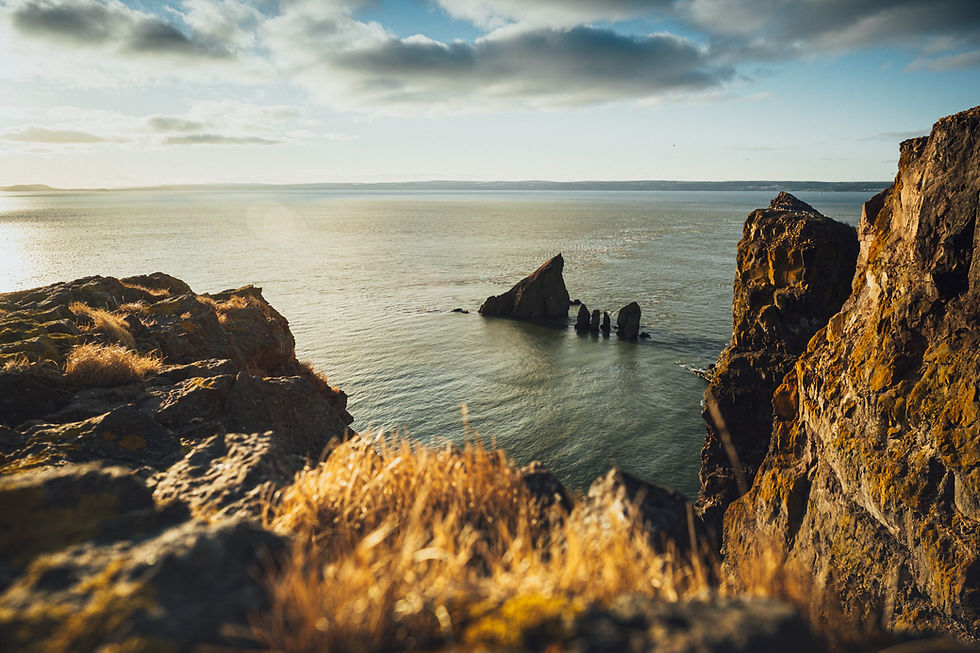Greetings from Sequoia & Kings Canyon National Park!
- RWC Tutors

- Aug 31, 2023
- 5 min read
Updated: Sep 10, 2023

A treasure near the Central Valley, Sequoia and Kings Canyon National Park offers a picturesque escape. Located approximately an hour and twenty minutes from Reedley College, east up the 180 freeway, the national park holds a rich history for its visitors. For the last 133 years, the parks have grown to protect 1,353 miles. Today more than 1.5 million people a year visit and enjoy the protected land.
It was established as a national park on September 25, 1890, by President Benjamin Harrison. The first national park was created to protect living organisms. The giant sequoia trees were protected from logging, and America gained its second national park. A week later, General Grants National Park was created to expand the number of protected Sequoia Park acreage. A new national park was created in 1940 by Franklin D. Roosevelt. The new park included Kings Canyon, a glacially formed beauty. Kings Canyon National Park included General Grants National Park, and since then, Kings Canyon and Sequoia have operated as a joint national park.
Open 24 hours a day, 365 days a year, weather and road conditions sometimes restrict access to the park. When visiting, people are concentrated in five areas. Grant Grove, Giant Forest, and Foothills are open all year. Cedar Grove and Mineral King open late spring to early fall. With a variety of activities to partake in, like Hiking, Camping, Backpacking, Rock-climbing, Picnicking, sightseeing, exploring, and so much more, it is essential to always be informed about the park’s current statuses and warnings, which are available and updated online through the National Parks website.
REMAINING FREE DAYS 2023
Saturday, September 23 — National Public Lands Day
Saturday, November 11 — Veterans Day
Safety is the traveler's responsibility while within the park! Remember to arrive aware of natural areas.
Animals, Plants and Ecosystems
Covering Sequoia and Kings Canyon National Park elevation includes a range of low foothills to the peaks of the Sierra Nevada Mountain range. This diversity in land provides a habitat for many animals and plants to thrive in the beautiful landscapes and environments that make this area unique. The diverse vegetation of the site is categorized into the zones of Foothill, Montane Forests, Subalpine, and Alpine. These areas are home to over 1,200 species of vascular plants. Nearly 6,000 species of plants are known in California, and over 20% can be found within Sequoia and Kings Canyon National Parks. In the foothill area, some animals live all year long, others only during the winter, and some for breeding. According to the National Park Service Website, “Local species include the gray fox, bobcat, striped and spotted skunks, black bear, woodrat, pocket gopher, white-footed mouse, California quail, scrub jay, lesser goldfinch, wrentit, acorn woodpecker, gopher snake, California kingsnake, striped racer, western whiptail lizard, and the California newt.” In the Montane forests and meadows area, the chickaree, gray squirrel, golden-mantled ground squirrel, mule deer, black bear, mountain lion, and various birds are common. In the subalpine and alpine areas, mammals are less common in the high Sierra landscapes due to scarce food sources. Marmots, pika, and white-tailed jackrabbits are the few mammals inhabiting this area. Birds in this area include Clark’s nutcracker, mountain bluebird, American pipit, and gray-crowned rosy finch. In this region, one may be lucky to come across the two endangered species, the mountain yellow-legged frog and a Sierra Nevada bighorn sheep, which are included in recovery efforts.
Land Acknowledgement
It is important to acknowledge and recognize that we gather on the lands of native people. A significant part of the land’s history is the Native Americans, whose homelands are Sequoia and Kings Canyon National Park. The Mono (Monache), Yokuts, Tübatulabal, Paiute, and Western Shoshone people occupied, tended, and cherished the high Sierras as their homeland and still hold significant connections to the land. We recognize their spiritual connection to all aspects of the land and thank them for their resilience, perseverance, and strength. It is important to acknowledge all other indigenous peoples and those who now reside in these areas. The displacement experienced, forced relocation and reorganization of Native peoples have affected relationships with lands in the parks, with the National Park Service, and others within the Indigenous community. Native peoples have numerous descendants living who continue to steward and tend to the lands within Sequoia and Kings Canyon National Parks. We offer our respects for their shared struggle while they maintain language and culture and allow remembrances of their ancestors and the legacy their people hold.
My Sequoia National Park Experience
Few things in nature are taller in size than a Sequoia tree. From a meager pinecone, these giants emerge from the ground up to touch the skies farther than the human eye can see. Their height can range anywhere from 250 to 300 feet. Their voluminous trunks can span 30 feet in diameter. Protectors of the Earth, ancient giants, true homebodies, Sequoia trees attract visitors of all backgrounds year round. This year, I had the privilege of beholding their magnificence. It surprised me when my father, the busiest person I know, expressed interest in seeing the Sequoias. Shortly after, I found myself standing in front of a 3000-year-old sequoia.
"A lifelong dream of mine became a reality. At a mere five-feet tall, I gazed up endlessly and wondered how a sapling could reach such grandiosity. Buzzing around me, people of all ages, statures, and cultures traveled miles to experience this moment. I presume to have recognized a few of the following languages: German, Italian, Spanish, and Arabic, among others. Regardless of the limitations of language, it goes without saying that there was a collective admiration and appreciation for the Sequoias." ~ Daniela Gutierrez
Contrary to human thought, nature never meant to frighten us. Among the whispers of the streams, the omniscient sun, and a green and blue canvas, I found an undeniable truth: We are part of such grandeur. And in this knowledge, I ceased to remember any prior worries and insecurities plaguing our modern conscience. With my feet firmly planted on the ground, I discovered I belonged. Year after year, and long after we are gone, Sequoia trees will continue to welcome and inspire the human conscience. And if trees could talk, I am sure they'd say, "Don't forget where you come from." I overheard a conversation between a stranger and my father. "One can only feel impotent," he diminished no less. The tallest person confirmed to have walked the Earth was only 8 feet tall. The average life expectancy is roughly 80 years old for a person. Time passes for man; time ceases to flow for nature. Against the forces of nature, man is left feeling insignificant. And yet, I felt welcomed by nature to partake in its beauty. There is a reason why, on a Saturday afternoon, we found ourselves far from home.




Comments